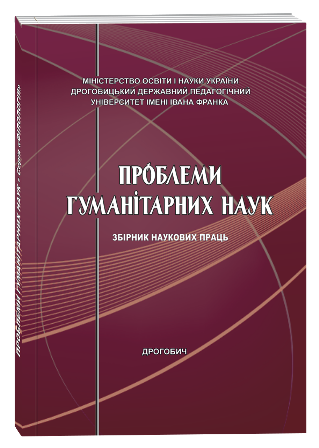SEMANTIC AND PRAGMATIC RELATIONS BETWEEN COMPOUND TERMS-NOUN IN ELECTRICAL ENGINEERING
DOI:
https://doi.org/10.24919/2522-4565.2022.51.17Keywords:
compound term, semantics, pragmatics, noun, electrical engineering, scientific and technical textAbstract
Today, in the era of technological boom and rapid development of state-of-the-art technological inventions, the lexical level of scientific and technical literature, in particular on electrical engineering, is actively replenished with new units. These are mainly terms used to designate objects, devices, names of parts of these objects and devices, processes, phenomena, units of measurement, names of professions, etc. in the analyzed field. An obligatory component of the lexical level of electrical engineering texts are compound terminological units, in particular of the noun type, which we will analyze in the paper from the point of view of semantics and pragmatics and in the context of their connection or definite distinction. Its goal was to find out what is primary in the process of creating a new compound noun term: semantics or pragmatics and how they interact in the structure of the lexical meaning of a terminological unit. The analysis of the theoretical material convinced us that all scientists can be grouped into three camps regarding their view of this problem. Representatives of the first of them believe that semantics is the main, dominant one, and pragmatics is just its extension called post-semantics. Instead, representatives of the second group deny the existence of any connection between these concepts, justifying their independence from each other. The third group of scientists insists on the complete interdependence of semantics and pragmatics. Based on the analysis of noun-type terminological units extracted from English-language scientific and technical texts on electrical engineering, primarily their semantics and pragmatics, we adhere to the views of the last group of scientists in our research, are its supporters and consider the semantics and pragmatics of terms as a single, indivisible monolith. This can be explained by the fact that the understanding of any lexical unit, in particular a compound noun term, occurs due to the simultaneous perception, analysis and understanding of the heard reality, that is, due to the simultaneous use by the recipient of both semantic and pragmatic knowledge.
References
Азнаурова Э. С. Прагматика текстов различных функциональных стилей. Общественно-политический и научный текст как предмет обучения иностранным языкам. Москва : Наука, 1987. C. 3–29.
Бацевич Ф. С. Термінологія комунікативної лінгвістики: аспекти дискурсивного підходу. Проблеми української термінології. Вісник нац. ун-ту «Львівська політехніка». 2002. № 453. С. 30–34.
Безугла Л. Р. Лінгвістична прагматика та дискурсивний аналіз. Studia philologica. 2012. Вип. 1. С. 95–100.
Вышкин Е. Г. К проблеме разграничения семантики и прагматики. Коммуникативно-прагматические функции языковых единиц. 1990. № 3. С. 3–7.
Ємець О. В. Типи та прагматичний ефект висунення у сучасних художніх і газетних текстах. Філологічний дискурс: зб. наукових праць. 2018. Вип. 7. С. 213–220.
Іщенко Н. Г. Прагматичне значення похідних іменників. Вісник ЛНУ ім. Т. Шевченка. 2012. № 14 (249). С. 78–84.
Козловський В. В. Семантичний і прагматичний аспекти речення (на матеріалі сучасної німецької мови). Збірник наукових праць. Проблеми загального, германського та слов’янського мовознавства. 2008. С. 323–326.
Ходаковська Н. Г. Співвідношення семантики та прагматики в структурі лексичного значення стилістично маркованих похідних іменників. Науковий вісник кафедри Юнеско КНЛУ. 2010. Вип. 21. С. 140–147.
Gibbs R. W. A New Look at Literal Meaning in Understanding. What is Said and Implicated. Journal of Pragmatics. 2002. Vol. 34. P. 457–486.
Grice H. P. Logic and Conversation. Studies in the Way of Words. 1991. Vol. 25. P. 22–40.
Huang Y. Pragmatics. Oxford, 2007. 367 p.
Levinson S. C. Pragmatics. Cambridge, 1995. 420 p.
Récanati F. Direct Reference: From Language to Thoughti. Oxford, 1993. 420 p.



